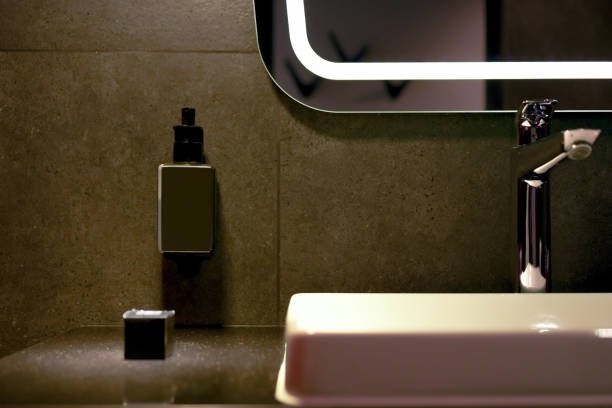When designing or renovating a bathroom, choosing the right sink is a key decision that affects both the room’s functionality and style. Classic bathroom sink options offer a timeless aesthetic that complements almost any decor, from vintage-inspired to contemporary minimalist. Among these, the porcelain bathroom sink stands out as a favorite for its elegance, durability, and easy maintenance. In this guide, we’ll explore the different types of classic sinks, their benefits, materials, and tips for selecting the right one for your space.
Why Choose a Classic Bathroom Sink?
Classic bathroom sinks have a universal appeal that transcends design trends. Whether you’re creating a traditional look or aiming for something more transitional, these sinks provide:
-
Timeless beauty: Their designs often feature clean lines, soft curves, and neutral colors.
-
Versatility: They can blend seamlessly with a wide variety of bathroom styles.
-
Durability: Materials like porcelain, ceramic, and cast iron are built to last for decades.
Choosing a classic option also ensures that your bathroom won’t look dated as trends change over time.
Popular Classic Bathroom Sink Styles
Pedestal Sinks
Pedestal sinks are a hallmark of classic bathroom design. Featuring a basin supported by a tall, slender base, they are ideal for small bathrooms where floor space is at a premium. Pedestal sinks emphasize elegance and minimalism, offering a clean, uncluttered look.
Pros:
-
Great for small spaces
-
Easy to clean around
-
Timeless design
Cons:
-
Limited counter space
-
Storage must be added separately
Wall-Mounted Sinks
Wall-mounted sinks are another traditional option that is especially useful for saving space. Attached directly to the wall without a vanity or pedestal, they create an airy, open feeling in the bathroom.
Pros:
-
Ideal for small bathrooms
-
Adjustable height during installation
-
Easy to clean underneath
Cons:
-
Exposed plumbing may need to be covered for aesthetic reasons
Console Sinks
Console sinks combine the openness of a wall-mounted sink with the added support and elegance of legs. Often, these legs are metal or porcelain-coated for a refined look.
Pros:
-
Offers some counter space
-
Stylish, open design
-
Ideal for vintage or retro-style bathrooms
Cons:
-
Still offers limited storage space
Drop-In and Undermount Sinks
While slightly more modern, drop-in and undermount sinks can easily fit into a classic bathroom aesthetic when paired with traditional countertop materials like marble or stone.
Pros:
-
Customizable with countertop materials
-
Easy to replace or update
-
Available in a variety of shapes and sizes
Cons:
-
Requires a vanity or countertop
-
Installation can be more involved
Materials Commonly Used in Classic Sinks
Material choice is crucial in determining a sink’s longevity and overall feel. Here are the most popular materials for classic bathroom sinks:
Porcelain
Porcelain remains the top choice for many homeowners thanks to its high-gloss finish, resistance to staining, and classic white color. A porcelain bathroom sinks exudes a sense of luxury and cleanliness that has made it a staple in bathrooms for generations.
Ceramic
Very similar to porcelain but slightly less refined, ceramic sinks are durable, easy to maintain, and come in a wide range of shapes and sizes.
Cast Iron
Enamel-coated cast iron sinks are extremely durable and offer a rich, glossy finish. They are heavier than other options, so proper installation support is crucial.
Natural Stone
Materials like marble, granite, and travertine can create a more luxurious and unique look but require more maintenance to prevent staining and damage.
How to Choose the Right Classic Sink for Your Bathroom
Selecting the right sink involves balancing style, function, and available space. Here are some key considerations:
-
Size: Always measure your bathroom carefully to ensure the sink fits comfortably.
-
Style: Match the sink’s style to your overall bathroom design. For example, a pedestal sink works well in a vintage-style bathroom, while an undermount sink might fit better in a transitional space.
-
Material: Consider durability, ease of maintenance, and overall look when choosing a material.
-
Plumbing: Make sure existing plumbing can accommodate the sink you choose without major renovations.
Maintenance Tips for a Long-Lasting Classic Sink
Maintaining a classic bathroom sink is relatively simple but important for preserving its beauty and functionality:
-
Regular Cleaning: Use non-abrasive cleaners to avoid scratching the surface.
-
Avoid Heavy Impacts: Especially for porcelain and ceramic sinks, dropping heavy objects can cause chips or cracks.
-
Address Stains Quickly: Though materials like porcelain resist staining, it’s best to clean up spills as soon as possible to prevent discoloration.
Conclusion
A classic bathroom sink brings timeless charm, functionality, and elegance to any bathroom design. Whether you opt for a pedestal, wall-mounted, console, or countertop style, classic options like the porcelain sink for bathroom ensure your space remains stylish for years to come. By choosing the right material and maintaining it properly, you can enjoy a beautiful, durable sink that adds lasting value to your home. Carefully considering your bathroom’s needs and your design preferences will help you select a sink that perfectly balances tradition and modern convenience.





